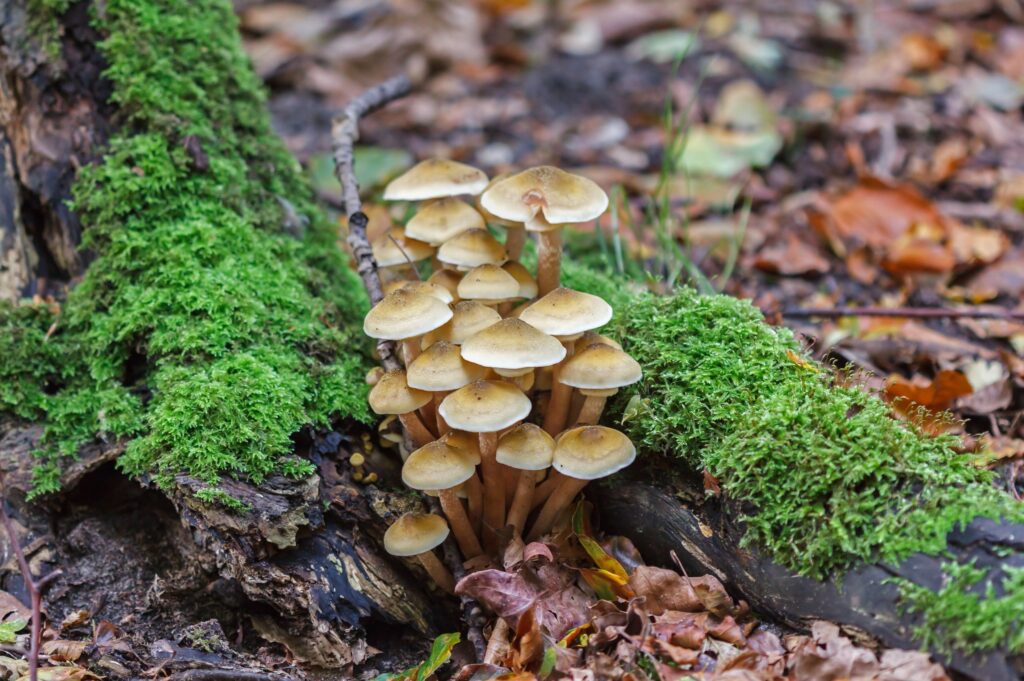Many people assume that mushrooms are markers of healthy soil. And in some cases, they are. They can improve nutrient absorption for surrounding plants and provide essential nutrients to trees, gardens, and soil. However, on the other hand, some types of fungus are dangerous for trees or indicative of pervasive tree health issues that need to be addressed ASAP.
Identifying Harmful Fungus Around Your Trees:
Root Rot
- What it looks like: Root rot is often characterized by a noticeable decline in the tree’s overall health. Foliage may wilt, and the bark might develop cankers or lesions.
- How to identify it: Check for discolored, mushy roots. Foul odor and the presence of fungal mycelium (a network of branching fungal roots) are also indicators.
- What to do about it: Consult with a professional arborist from Cox’s Tree Service to evaluate the extent of the infection. They may recommend pruning affected roots, improving drainage, and applying fungicides if necessary.
Butt Rot
- What it looks like: Butt rot affects the base of the tree right above the roots, causing decay and weakening the structure. Signs include conks (shelf-like fungal growths) or mushrooms at the tree’s base.
- How to identify it: Look for conks or mushrooms growing directly on the trunk at or near ground level. Examine the base for soft, spongy wood.
- What to do about it: If the damage is extensive, removal of the infected tree may be the best course of action to prevent safety hazards as the integrity of the tree is likely compromised.
Ganoderma
- What it looks like: Ganoderma is recognized by its distinctive red-brown, shelf-like fruiting bodies (conks) that emerge from the trunk.
- How to identify it: Observe the tree for the presence of Ganoderma conks. Note any changes in the tree’s vitality and overall health, as the degree of the ganoderma’s impact may vary.
- What to do about it: Depending on the severity and prevalence of ganoderma growth, interventions may include pruning affected branches, taking steps to improve the tree’s health and resilience, and monitoring for further signs of decay.

Armillaria

- What it looks like: Armillaria, also known as oak root fungus, forms clusters of honey-colored mushrooms around the base of the tree.
- How to identify it: Check for mushroom clusters, as well as a white, fan-shaped fungal growth beneath the bark. Look for dieback in the tree canopy as the presence of armillaria fungus impacts the integrity of the entire tree.
- What to do about it: If you suspect the presence of armillaria, Cox’s Tree Service can provide professional advice on supporting your tree, including pruning, promoting tree vigor, and potential fungicide applications.
Some Fungi Are Actually Helpful
While many fungi pose a threat to tree health, it’s essential to recognize that some play beneficial roles. Mycorrhizal fungi, for instance, form symbiotic relationships with trees, enhancing nutrient absorption. These beneficial fungi contribute to the overall health and resilience of your trees by creating an underground network that allows trees to share nutrients and improve uptake from the soil.

